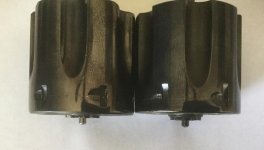Pantera Mike
Member
- Joined
- Dec 21, 2017
- Messages
- 161
- Reaction score
- 126
All,
I was fortunate enough to buy a Model 27 cylinder in 357/44 Bain and Davis from a fellow forum member yesterday, and soon will be buying a Model 27 to go with it. I have searched the internet and have found the various articles, as well as published load data from Hornady and Accurate Arms.
Now I am hoping to get real-world advice from those of you who load this esoteric and under-appreciated caliber. I thank you in advance for any words of wisdom you can share!
I was fortunate enough to buy a Model 27 cylinder in 357/44 Bain and Davis from a fellow forum member yesterday, and soon will be buying a Model 27 to go with it. I have searched the internet and have found the various articles, as well as published load data from Hornady and Accurate Arms.
Now I am hoping to get real-world advice from those of you who load this esoteric and under-appreciated caliber. I thank you in advance for any words of wisdom you can share!
Last edited:


